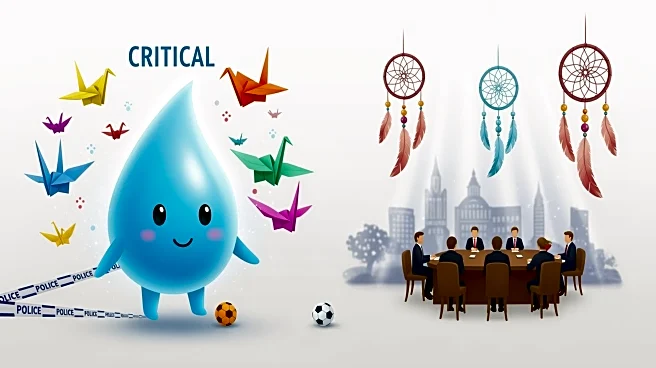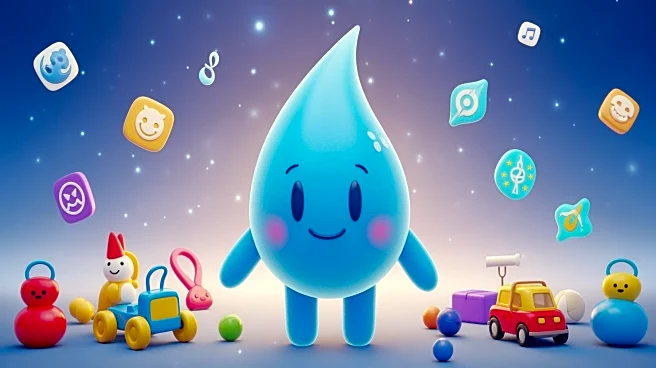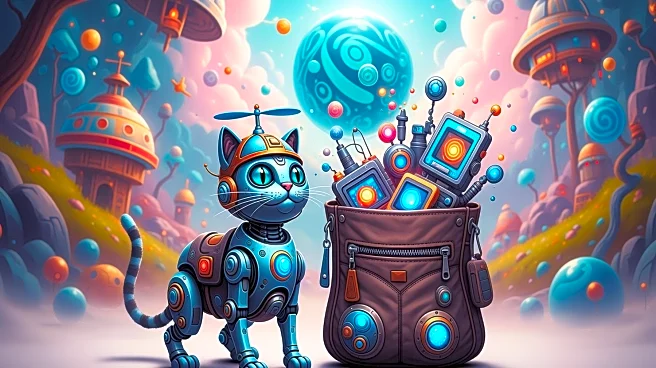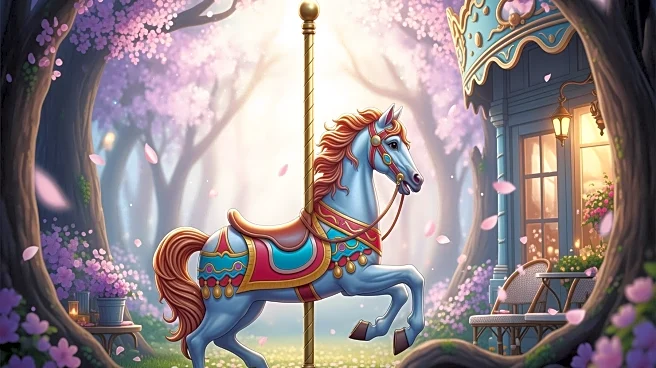What's Happening?
The animated film 'Little Amélie or the Character of Rain' presents a unique narrative centered around a 2½-year-old girl named Amélie, voiced by Loïse Charpentier. The film, directed by Liane-Cho Han
and Maïlys Vallade, is an adaptation of Amélie Nothomb's autobiographical novel 'The Character of Rain.' Set in 1960s Japan, the story follows Amélie's journey from a self-proclaimed deity to a child engaging with the world around her. Her awakening is triggered by an earthquake and a piece of Belgian chocolate, leading her to explore nature and Japanese culture. The film's animation style is reminiscent of impressionistic paintings, using flat hues and lacking intricate designs, which contributes to its distinct aesthetic. Amélie's relationship with her housekeeper, Nishio-san, played by Victoria Grobois, is central to the narrative, highlighting themes of cultural connection and empathy.
Why It's Important?
The film's exploration of childhood awakening and cultural connection offers a profound commentary on identity and belonging. By depicting Amélie's interactions with Japanese culture and her housekeeper, the film addresses themes of empathy and understanding across cultural divides. This narrative is significant in today's globalized world, where cultural exchange and understanding are increasingly important. The film's artistic approach, using animation to convey complex emotions and themes, showcases the potential of animation as a medium for storytelling. It also highlights the importance of memory and empathy in overcoming loss and cultural barriers, offering viewers a chance to reflect on their own experiences and connections.
What's Next?
As 'Little Amélie or the Character of Rain' continues its limited release, it may attract attention from audiences interested in animated films that offer more than entertainment, providing cultural and philosophical insights. The film's unique artistic style and narrative could inspire other filmmakers to explore similar themes and techniques. Additionally, the film may contribute to discussions on cultural identity and empathy, encouraging viewers to consider their own cultural connections and the importance of understanding diverse perspectives.
Beyond the Headlines
The film's depiction of Amélie's journey from self-centeredness to empathy and understanding offers a deeper reflection on human development and cultural identity. It raises questions about how cultural environments shape our perceptions and interactions with the world. The film's artistic choices, such as the use of animation to convey complex themes, challenge traditional storytelling methods and highlight the potential of animation to address serious topics. This approach may influence future animated films, encouraging creators to explore innovative ways to convey meaningful narratives.











